With the Micro Four Thirds lens collection now no longer lacking good, affordable zoom and prime options, Olympus has shifted their focus to making premium large aperture prime lenses. In addition to the existing M.Zuiko 25mm F1.2 PRO lens, Olympus just announced two new PRO lenses: the 17mm F1.2 and the 45mm F1.2. Special thanks to Olympus Malaysia for the M.Zuiko 45mm F1.2 PRO loan unit for this review. I’ve had one full day to shoot with the lens on the streets and behind the scenes of a Chinese Opera.
The highlights of the Olympus M.Zuiko 45mm F1.2 PRO lens are:
- Designed to be optimally balanced between delivering excellent resolution and producing beautiful “feathered” bokeh.
- Complex lens construction consisting 14 Elements in 10 Groups with 1 ED lens, 4 HR lenses, 1 aspherical lens
- Full weather sealing (splash and dust proof)
- Minimum focusing distance of 0.5 meter and maximum magnification of 0.1x
- LF-n button (customize-able function button on lens), manual focus clutch mechanism, takes 62mm filters and weighs about 410g
You can find the full technical specifications on the official product page.
In case some of you aren’t aware yet, I left my Olympus employment in April. So neither MT nor I are affiliated to Olympus in any way and this is an independent review. The Olympus M.Zuiko 45mm F1.2 PRO lens and OM-D E-M1 Mark II camera body were provided on loan by Olympus Malaysia strictly for review purposes only. This is an experience based review and is likely to be subjective. All images were shot in RAW and post-processed in Capture One Pro version 10.2. For higher resolution images with full EXIF data intact, kindly view the images in the online gallery here.
Read on for the rest of the review.

F1.2, 1/400sec, ISO200
Image shot at F1.2 shows high level of sharpness, and beautiful bokeh

Left F1.2, Right F2.8
F1.2 produces extremely shallow depth of field, but areas in focus are very sharp. At F2.8, the depth of field improved with more zone in focus, and sharpness also improved by a little.
Much like its sibling, the Olympus M.Zuiko 25mm F1.2 PRO, the new 45mm F1.2 creates images with impressive sharpness. Even shooting at wide open aperture of F1.2, the lens is capable of delivering very sharp results. Stopping the lens to F2 yields slight, but noticeable improvement in sharpness, and this improves a little more at F2.8. I did not observe any more increase in sharpness beyond this, and even at F1.2 I was already satisfied with the level of detail this lens can capture. I would say the level of sharpness is roughly equivalent to what can be achieved with the Olympus 75mm F1.8 or 25mm F1.2 PRO lenses. In case you’re wondering, the 45mm F1.2 is, in terms of sharpness, significantly better than the older but highly respected 45mm F1.8 lens. I am not surprised if the technical tests rank this Olympus 45mm F1.2 PRO lens to be among the top 3 sharpest Micro Four Thirds lenses.
Considering the medium telephoto equivalent focal length of 90mm (in 35mm format), this 45mm F1.2 can produce shallow depth of field even on the smaller Micro Four Thirds image sensor size. Shooting wide open allows sufficient subject isolation with good amounts of background blur.
Olympus claims that the 45mm F1.2 lens was designed to achieve “feathered bokeh”: a bokeh style that transitions smoothly from the in-focus to the out-of-focus area of the images, creating smoother background bokeh thus allowing the subject in focus to stand out beautifully. In order to accomplish this, Olympus added an aberration measuring instrument to calculate the defocusing at aberration level, a technology transmitted from the advanced microscope development.
To be honest, I have not the slightest idea what “feather bokeh” is, and this is the first time I’ve heard of it. However, having active instrumentation while shooting and real time processing just to control how the bokeh looks seems a little over-ambitious. Am I seeing the benefits of the special “feathered bokeh” effect from the Olympus 45mm F1.2 lens? This is a very subjective question to answer. Yes the bokeh is smooth, rounded, creamy with good transition drop off from the subject to out of focus area – that much I can observe. Is there really anything out of the ordinary? I shall leave the sample images here for you to judge for yourself.

F1.2, 1/25,600sec, ISO200, Electronic Shutter used
Shooting at F1.2 in superbly bright condition, the image shows very minor trace of chromatic aberration. There is almost no distortion observed.
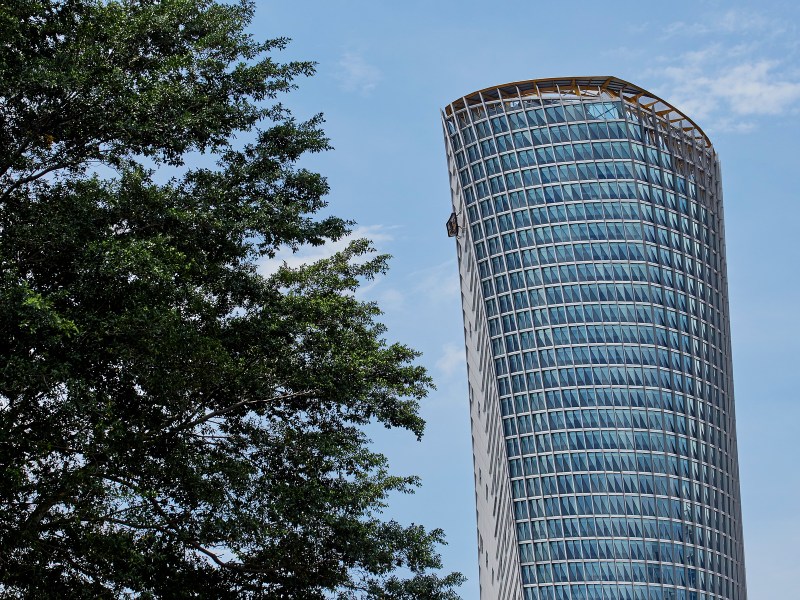
F5.6, 1/1,600sec, ISO200
Stopping down to F5.6, image shot with the 45mm PRO lens is almost flawless. Incredible level of sharpness, and almost no noticeable flaw.

F1.2, 1/32,000sec, ISO200, Electronic Shutter used
Another take on the wide open F1.2, under harsh, afternoon sun. Technical flaw control of the 45mm PRO lens is impressive, even under extreme conditions, shooting wide open at F1.2. Sharpness at F1.2 is also seen to be even from center to the edges of the image.

F1.8, 1/320sec, ISO200
Close up shooting test, I have done the same shots for varying apertures of F1.2, F1.8, F2.8 and F5.6

100% crops of F1.2 (top left), F1.8 (top right), F2.8 (bottom left) and F5.6 (bottom right) comparison. You may see the original non-cropped photographs, and the differing bokeh profiles based on the changing apertures on the full gallery here.
Technical flaws are controlled well on the Olympus 45mm F1.2 PRO lens. There is only minimal trace of chromatic aberration, noticeable when shooting at wide open F1.2, but is not intrusive at all and can be easily removed if required. There is no detectable distortion, not from my crude inspection of the building landscape images I’ve shot. There is also no issue with soft corners, in fact sharpness appears to be very even even at wide apertures of the lens. Stopping down the lens to F2.8, mitigates most, if any, of the flaws. Given the overcast conditions and a sun intent on playing hide-and-seek, I did not have the chance to test for flare. So far I have not encountered any ghosting or flare issues.
Having only a 0.5m minimum focusing distance is nothing to shout about when it comes to close up shooting, but lens performance up close is just as good. The lens is capable of delivering sharp images, even when used at close focusing distances. It is not advisable to use wide open apertures, due to extremely shallow depth of field.
On the Olympus OM-D E-M1 Mark II, the lens handles well. The size of the 45mm PRO lens is almost identical to the 12-40mm PRO lens. If you’ve handled the 12-40mm PRO lens before, you should be able to gauge how this new 45mm PRO lens will handle. They weigh almost the same and I was out all day shooting with the E-M1 Mark II and 45mm PRO combo without feeling any strain on my hands, shoulders or wrists. The lens felt balanced on the camera, and it was comfortable holding it for long hours. A lot of people may complain about the larger than usual size of the lens in comparison to other smaller Olympus prime lenses like the 17mm F1.8 or 25mm F1.8 lenses. However, in order to have a high quality F1.2 lens, I believe it is physically impossible to make it smaller. I have tried the 45mm PRO lens briefly on an Olympus PEN-F and Olympus E-M10 Mark II bodies and both combinations felt balanced and comfortable too.
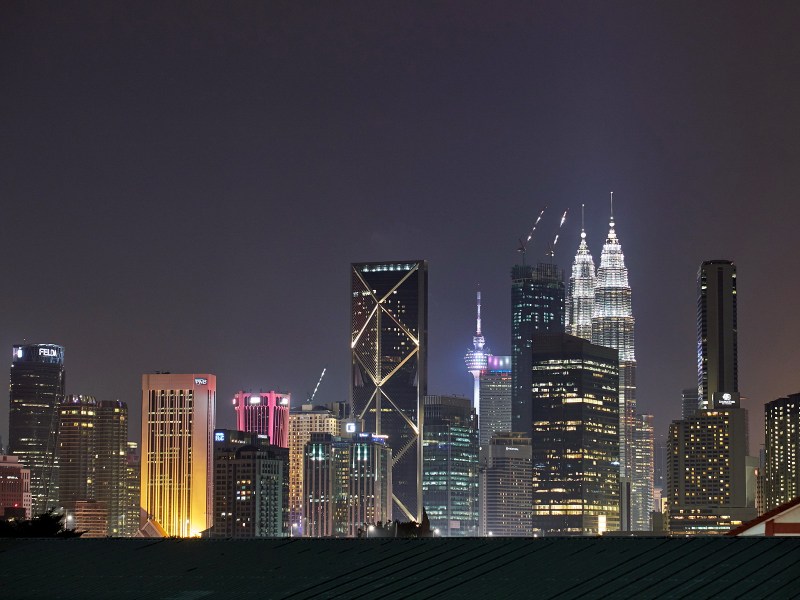
F2.8, 1sec, ISO200, Handheld
Combined with the efficient Image Stabilization system, the F1.2 lens can open up shooting possibilities in challenging situations.
Autofocus performance of the Olympus 45mm F1.2 PRO lens on the E-M1 Mark II body was superbly fast and extremely accurate. I almost had no misses. Shooting at F1.2, dealing with incredibly shallow depth of field, the high rate of critically sharp, in-focus images this lens managed to capture was nothing short of amazing. I was a little worried as I was frantically reviewing my images after each shot, just to make sure I had nailed my shots. Having an efficient contrast detect AF helps in nailing critical focus accuracy, something I believe some of the traditional dSLR AF system still struggle to achieve.
Even in less than ideal lighting conditions, the E-M1 Mark II and 45mm PRO lens combo nailed focus with no issues at all. In some of the sample shots shown above, the subjects were actually constantly in motion. The man carrying the red plastic stools was walking at a fast pace, and I used single AF. The street music performers (guitarist and drummer) kept shaking their heads and bodies, yet shooting wide open at F1.2, I have no issue in getting my shots, all in perfect focus.
While I was happy with the fast performance of the lens and the excellent image quality, the one thing that made me fall in love with the lens, is how the rendering characteristics of the images by this 45mm PRO lens look. I am not just talking about the bokeh quality, or the “feather” look that Olympus claims. This may sound purely subjective, and personal but I find the images from the 45mm PRO lens to be lively, vibrant and realistic. There is an extra dimension to the images that I did not see in my frequently used 45mm F1.8 lens, or any other lenses. In fact, I did not notice this quality even with the Nocticron 42.5 F1.2 lens which I did use extensively for a while. Whatever secret sauce Olympus is using here, I sure hope they add it to their future lenses.
The special rendering characteristics can be seen in the series of BTS Chinese Opera images. The strengths and benefits of the 45mm PRO lens shone throughout this particular session. The F1.2 wide aperture, combined with medium telephoto focal length produced the shallow depth of field needed to isolate the subjects from the messy background. The bokeh is smooth and beautiful, allowing the subjects in focus to stand out. The images were mostly shot wide open at F1.2, yet zooming into the areas in focus reveals staggering levels of sharpness and incredible amounts of fine detail.
I have nothing negative to write about the Olympus M.Zuiko 45mm F1.2 PRO lens. While some may complain about the bigger size, I find it reasonable and I would not have a smaller lens with compromises made on the excellent optical quality. While the official retail price is not yet available in Malaysia, it is priced at $1,200 in the US and I was informed that Malaysian pricing should be quite similar to the 25mm PRO – a lens many are unwilling to invest in. However if you are after the best of the best that Micro Four Thirds can offer, the Olympus 45mm F1.2 is a lens that you should seriously consider.
__________________
We are also on Facebook and there is a curated reader Flickr pool.
Images and content copyright Robin Wong 2017 onwards. All rights reserved


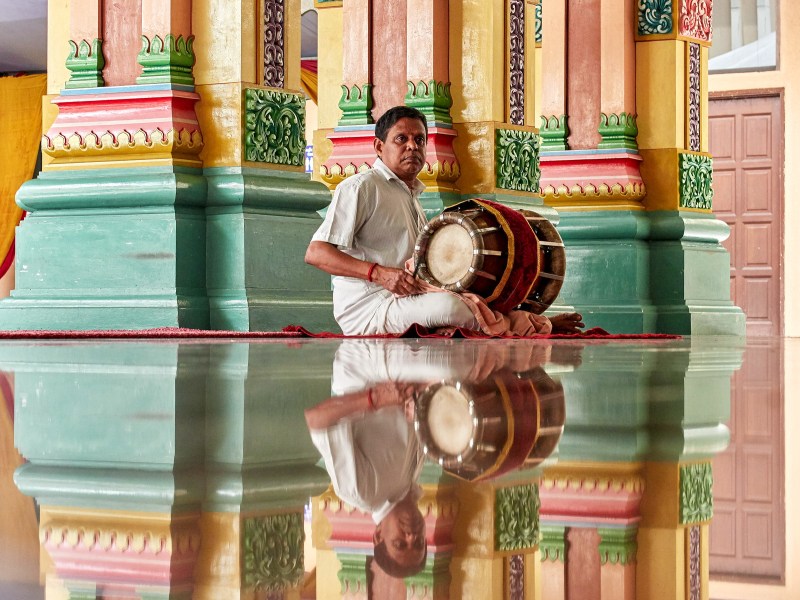











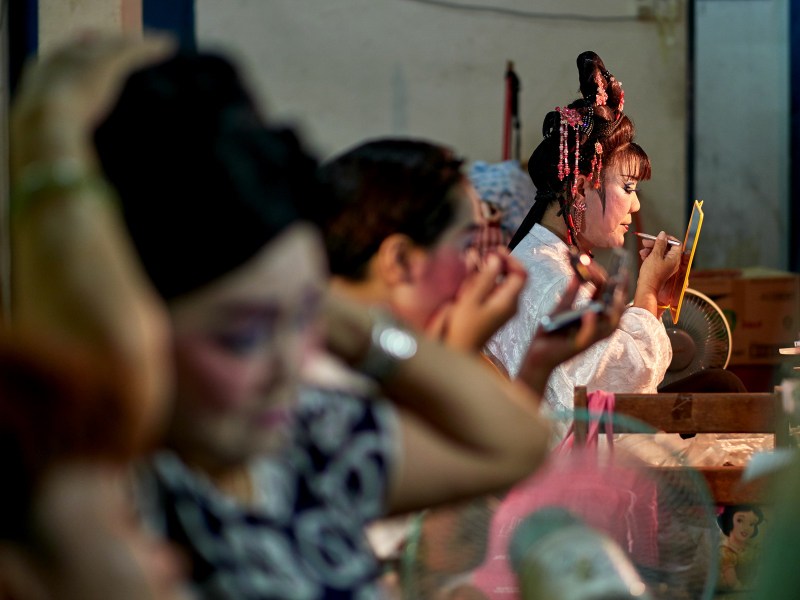

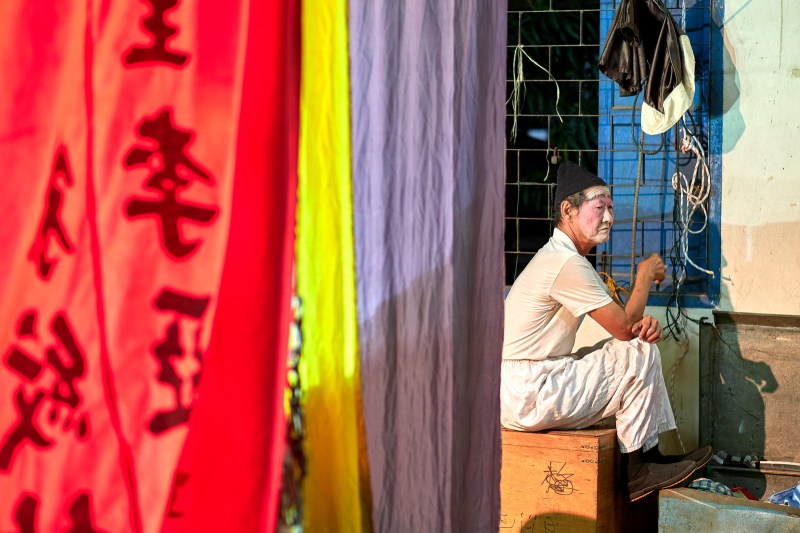






Cool lens, but I myself use the Sigma 1.4 56 mm for this Purpose!!!
Hi Robin,
Panasonic nocticron 42.5 has an” unsecret sauce”. İt is simple “LEİCA”.
And Stevehoff and many others showed “3d pop effect” before three years ago.
Now ı m using omd em5 mii+ oly 11-40 and nocticron 42.5
Robin, do you tune Capture one defaults for color? I would be interested to know your default settings on the Color tab. I tend to dial back reds for certain skin tones. What do you do?
Hey Robert,
Nope, I did not do anything to the color, except for minor white balance tweaking in some of the shots (temperature changes, nothing major). I find the default Capture One color for Olympus cameras are very close to what I normally get straight out of camera, or processed via Olympus Viewer 3. That is the main reason I use Capture One now.
Mr Wong’s reviews kill my desire to buy better, more expensive equipment because he is so good a photographer, *any* lens produces good pictures in his hands – so, I figure I don’t need more gear, but greater inspiration and more practice!
About the bokeh thing…
There is a foreground bokeh and a background bokeh – background more significant, of course. So, everybody is talking about the background bokeh as a “bokeh”. But now some words about the foreground.
Feathered bokeh in the background is an outcome of some spherical aberration. More precisely, the under-correction of it. If over-corrected, the outcome is “nervous bokeh” or to the extrem, “a soap bubble bokeh” like in Trioplan 100mm. But in Trioplan, the foreground bokeh is extremly soft! So I tested the foreground bokeh of my Olympus 25mm f1.2…
You guessed it: the foreground bokeh is nervous at f1.2! You can see it also in one of your f1.2 pics above, where three people are sitting in the row and the focus is far. The foreground bokeh is not “feathered”.
How is that…?
If you are referring to the pic where the opera singer is applying lipliner and there are 2 other singers in front of him, then I don’t see any nervousness in the foreground at all. I fact I would say that it’s very smooth and buttery. The only think that I can think of that you may be considering as nervous bokeh are the multiple bokeh balls on the front guy’s bracelet but that would be because there are multiple specular highlights from the bracelet and does not depict nervousness. In fact those bokeh balls are very smooth (i.e. their edges are not as defined as those on other lenses). If you want to see nervous bokeh, check out the background of the 300mm F4 IS Pro with busy backgrounds/foregrounds at certain distances. This lens’s rendering of out of focus areas is unmatched. Just check out the “outline” of the front guys’ elbow and hair in the pic you’re referring to. I put outline in quotation marks because there IS no outline. It’s just gradual blur.
The Olympus cameras capture such beautiful colors when handled by you. I have also recently switched to C1 and it’s great! I have found that Photo Mechanic is a great browser for going through the images too because it can instantly view the RAW files faster than the computers see JPG’s.
It’s great to see a review of such an exciting new short tele lens.
I DO have a question though. Given your past connection with Olympus, do you know if Olympus listens to user’s suggestions for future lenses and lens accessories? If so, how would a customer go about presenting these suggestions to them? Thanks in advance for your time and attention.
I do not think they will take in direct feedback like that. Even I had issues giving my own responses when I was an employee. Nonetheless, as consumer, your voice is powerful. Make enough noise online (previously, the shutter shock issue on E-M1) and I am sure they will listen.
Nice review Robin, thank you!
Capture One! Welcome to the world of the best RAW processor there is IMO. I hope you like it! I’ve been using it for years now and I couldn’t be happier. Have fun with it!
I am loving the speed and efficiency of the Capture One. So far, handles Olympus files very well.
Faster than lightroom ?
C1 uses your hardware way more efficiently than LR. Every single CPU and GPU core.
I have an old Mid 2010 Mac Pro that I outfitted with an NVIDIA GTX980Ti card and it is awesome with C1. It can output 4-5 JPEGs per second from 36 megapixel D810 RAWs, OM-D RAWs even faster. LR is a far cry from that – unless you have very current hardware.
All the functions and controls are just as fast on C1 with that graphics card.
Whoah, 4-5 JPEGS per second. I think I can do like 1 JPEG per second. I need an upgrade!
Hi Robin
Are you using Capture One Pro on a Mac or Windows?
I’m thinking of going Capture One Pro too after you said the colors are very close to Olympus native colors from Viewer 3.
I like Viewer 3 but it’s quite slow even on a desktop and even slower on my MBP.
Thanks
Great review as usual! How do you feel about the bokeh ‘balls’?
Thanks Alan. I honestly do not see anything that noteworthy about the bokeh “balls”. Nothing out of the ordinary.
Not sure if it is just the backgrounds on these photos but the bokeh doesn’t seem quite as smooth as with the 25mm to me. I can’t afford the 25 but have been visiting shops and trying it just to experience the bokeh, I love how clean and smooth it is. There are a few 17mm samples out now which looks smooth too. You can’t beat the DOF and subject isolation with this 45 though.
Thank you for your excellent report. This lens is something I have had in focus for a while I think I will get it as soon as it becomes available.
Thanks Felix, glad to know that you have found the review helpful! Go for it!
The samples look really strong / good Robin. I guess if you are buying all the three primes it may invite comparison shoping due to the total price, but the lenses sure seem really good. The clarify in the shots you took for the actor putting up the make up is quite nice.
Thanks Ricardo! I definitely won’t be getting all three of them, but maybe one of the F1.2 primes to add to my own collection.
Do you think the 17 1.2 will be just as sharp?
I sure hope so. I can only comment on this after I have tested one. It is not available yet for review at the moment.
Great photos–do you know the name of the reed instrument those musicians are playing?
Thanks David. I think that was a “Shehnai”, traditional Indian flute like instrument.
Wow! Great pictures, Robin. Love the evening-street-pictures very much: nice colors, great bokeh and that ‘just right’-spot-on-feeling (diificult to classify…). For sure this will be my standard-lense, as soon as it will reach the market. Thank you for you quick post after market introduction, look forward to your 17mm view and experience!
Thanks for the kind words, and glad that you are getting one. The 17mm won’t be here so soon, I will definitely review it once I get my hands on it.
Great photos as usual Robin! Your thoughts on the ‘bokeh’ balls?
Nothing out of the ordinary really. The great stuff is the smooth transition from in focus to out of focus areas.
I have finally sat down and read the review. O. M. G. The shots are incredible!!!
Hi Liza! Thanks for the kind words! Amazing lens indeed.
Hi Robin, Love these photos. Really astounding, I saw them first on my Huawei Mate 9 phone screen and now I am sitting at my desktop. I have seen two Olympus Visionaries photos with this lens – the way they rendered their images, I thought, yeah, nice bokeh, next – i.e. there is so much gear now from all brands that can do this. But once in a while, the way the photographer visualises the shot, composes, gets the lighting, shoots, processes makes an impact. I too, think there is quite a bit of marketing speak on “feathered bokeh” but this set of photos wakes me up. The last time I “woke up” was when MT did natural light indoor portraits with the Hassie.
Oh wow, Ananda you are being too kind! Thanks man. The Olympus 45mm F1.2 did render the images differently from their other lenses, I just could not quite describe it, or use the right words to demonstrate it. I do not think it is due to the bokeh alone, yes the feathered bokeh is nice, but what I am seeing is the overall look of the image. I definitely need more time with the lens, and I should do a follow up post exploring this “special sauce” found in this lens.
It’s not just the bokeh, it is the focus fall off and rounding of sharpness. Of course you can easily or accidentally suppress this look by applying indifferent lighting or some regular preset that the photographer is used to. What happens to your shots is you are used to let the gear performance shine through, Can’t wait to see you handle the 17mm f/1.2 – I know that is your least favourite focal length but the look might surprise you. By the way, now I see how you handle the 45 f/1.2, I might do better with the 25mm f/1.2 than the last time 🙂
Poor Kirk Tuck – he won’t be able to decide whether he wants the A7R III or these lenses.
The 17mm is not going to happen so soon, I was told this will come much later, and once I have it, surely I will review it. It won’t be fun if it was easy, and I like a little challenge. Since the 35mm is never my favourite, things might get a bit more interesting.
Kirk? He will end up with the Sony. I am quite sure.
I do have to disagree, Robin, as Kirk has been expounding on the wonders of his GH5 with Olympus lenses for the last few months now.He can’t seem to say enough good things about the Olympus Pro lenses. What makes you think he will switch back to Sony?
Purely for video I guess. He has been raving about the goodness of Sony’s video for a while now. Then again he has been using the GH5 a lot lately. Who knows. We will see.
Kirk Tuck just ordered one. And it’s his birthday, so we should congratulate him twice.
As soon as the price comes down I will have one too. It is a lot of money, but considering the quality it’s a bargain.
Thanks for these convincing pictures Robin. ‘Lively, vibrant and realistic’ sums it all up.
Yeap, just saw that on his blog. I am sure he will have lengthy postings about the 45mm F1.2 once he got his hands on one. Can’t wait to hear his thoughts as well.
That would be amazing. It’s always nice to read a followup after you’ve had more time with it. I’ve always enjoyed it when MT was able to go back to his earlier reviews to expand or even change his initial thoughts.
And sorry for the double comment from yesterday, I didn’t realize my initial comment went up already.
Great review, Robin. The lens looks really, really good.
I guess that in the first shot, the drummer sits on a really shiny floor? It does kind of look like he’s floating.
Thanks! Oh yes, that floor was super reflective! All I did was place the camera on the floor to get the perfect reflection.
Onestly, the old 45mm f1.8 for less than 300$, is better?
As I have mentioned in my write up, everything in the F1.2 45mm is better than the F1.8 version, sharpness, image rendering, bokeh quality, technical flaw controls, etc. However, the 45mm F1.8 is smaller and truly compact, and affordable.
I don’t really see that the _quality_ of the bokeh is better… But it can be. It would be good to see side-by-side pics, do you plan to make such a comparison soon? Thanks for you review anyway! (I am still not a fan of the Olympus skin tones…)
No comparison reviews from me. I have vowed never to do that ever again. I am sure someone else will do the comparison though.
Thank you very much Robin for that very interesting review! I’d be interested to see a direct comparison between the 1.8/45 and this Pro45 from you, if possible. The extra dimension in the image you mentioned is very pleasing in portraiture IMHO (also see the DPReview gallery). This Pro45 is that special that I’d consider this lens – and only this one Pro lens – for portraiture along with the 1.8/17mm m.zuiko for general purposes in my two lens combo.
I have decided long ago, after one terrible incident that I will no longer do comparisons. It is just too much work physically, and sometimes, no matter what conclusion I come up with, people do not agree and they get really upset when their favourite lens or camera is not in the winning side. I just dont think I want to deal with the bloodshed anymore and move on.
Sad. Good reason though. Could not imagine that such excellent work and engagement would wake up the zombies. Thanks for all your good work for us!
No worries! Will continue to shoot more and share here of course.
Really? Surely you could do a single portrait of each both at 1.8 to compare rendering, and then one at 1.2 to show the difference the extra stop gives – just don’t comment or give any opinion and then don’t read any comments on posts of this type. It is very useful to readers and the conclusion the individual makes is what is most important to that person in the end.
Beautiful images as usual especially the drummer and his reflection. I do see the advantage of the ‘feather bokeh’ as it creates a 3D subject isolation. Did you use a custom WB on the Chinese Opera images? How did you overcome the warm hue on those tungsten lamps? Thanks for sharing.
Yeah I think the feathered Bokeh contributed to the “pop” of the images somehow.
There is a hidden setting in Olympus cameras to “keep the warm color” OFF or ON. Obviously I have set it to OFF. The images came out too neutral I needed to add a little warmth to simulate what I remember seeing in real person.
Thanks for a quick reply. I do always keep the warm color off. It’s just that I remembered on those tungsten lamp situation, it always looks warmer. But I do like your images WB in those situations.
Color is a very subjective thing. The best way to deal with color is to process it to look the way you remember seeing it in the first place!
Nice photos Robin! That first one of the drummer and his reflection is just tremendous.
Thanks! That is my favourite shot too.
many of us own the Panasonic 42.5 – the question will be is it worth it to buy this lens?
I am sure someone will do a direct side by side comparison with the Nocticron.
Fantastic review and photographs. The pictures that cameras today are capable of…. it’s amazing. I wish my eye was as good as the sensor and glass.
Thanks for sharing.
No worries, my pleasure to do the review and share!
Good to see the review is out. The Chinese opera photos look great. Love the last photo which you caught the right moment.
Thanks Ripi! Lets shoot again soon.
Beautiful photographs, Robin! I feel like I’m steering towards m43. Will the GX85 and this lens and the 17/1.2 work? Sorry, I’m new at this m43. My D810 is giving me low back pains. Lol!
Thanks for the kind words. I have not tried the lens on any Panasonic body yet. I shall do that soon, to get more sample images as well as to see how the AF performs on Panasonic. I would expect same level of sharpness, but distortion and CA control will be different I guess.
That would be great, Robin! Thanks! I like the GX85 because of no AA filter for ultimate sharpness and value. To share to you, I only have one lens (85/1.8 G) for my D810 and I use the Ricoh GR for my wides. The GR is a great camera but it’s also somewhat slow. I am thinking either get a wide angle lens for my D810 like the new 28/1.4 E from Nikon, which for the price I could easily get a M43 body with a 17/1.2 pro. What do you think? Thanks!
28mm and 35mm are two different animals altogether, though in terms of focal length they are not so far apart. I personally prefer to use 28mm over 35mm. If you ask me the 28mm is my answer but that is a subjective and personal one! Which focal length works better for you? Btw I’ve not tested the 17mm F1.2 Olympus so I cannot give any conclusions yet.
I prefer 28mm personally as well. I do hope you’ll test the 17/1.2 soon! Thanks for the quick reply, Robin! I appreciate you.
Thanks Robert. I was told the 17mm F1.2 won’t be available that soon. Shall tests it once I have my hands on the lens !
Hi Robin! Hope all are well. I picked-up the GX85 with the kit lens today. I am in awe of the dual IS. I feel like I need to recalibrate the way I shoot compared to a DSLR. I will go and read some of your past blogs about shooting M4/3 especially with IS. If you know the a couple of blogs to help newbies like me in the m4/3, feel free to post link. Thank you much, sir!
No worries! Welcome to the Micro Four Thirds world, and yes, the IS system is really something.